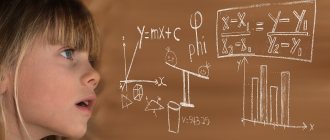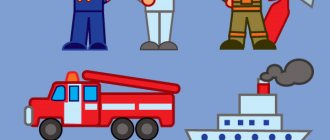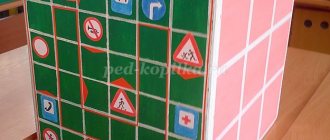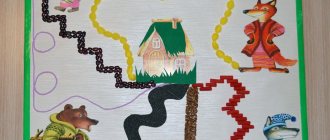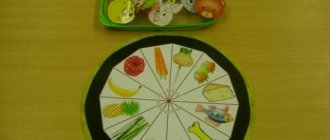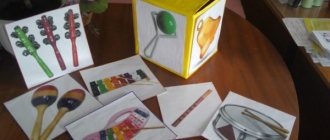Didactic game "Sports equipment"
Alexandra Gordeeva
Didactic game "Sports equipment"
Didactic game : " Sports equipment "
Preliminary work: look at all the pictures of sports equipment . Have a conversation about what the sports equipment and what it is used for.
Tasks:
D: Expand knowledge about sports equipment , its purpose, and sports .
R: Develop long-term visual memory, attention.
Q: Cultivate interest in physical education and sports .
Speech tasks: Develop children's coherent speech. Ability to formulate sentences correctly.
Game tasks: Collect the playing field the fastest, get the least amount of penalty chips.
Game attributes: Playing fields sports equipment , cards, chips, tokens.
Age:6-7years
Rules: individual game (with a teacher)
.
Option 1:
The set includes a field with a color image of sports equipment and color cards of these pictures (from 8 to 30 parts)
.
The child selects a picture and overlays it on the playing field with the same pictures. After the child has found the picture, he must name the sports equipment that is depicted on it. Tell us how you can use this equipment . For example: You can play football , hit it on the floor, throw it to each other, etc.
Option 2:
Disciplinary rules: The leader is chosen according to a counting rhyme. The sequence of strokes is clockwise. Players do not shout, give hints, or interrupt each other. (Whoever breaks the rules of the game receives a penalty chip)
.
Rules: 2-6 people play .
Game actions: The presenter distributes the playing field to the players. The cards remain with the presenter. The presenter takes out one card at a time and shows it to the players; the card goes to the player who has it on the playing field, and if the player named the inventory . The winner is the one who is the first to fill his playing card with cards and correctly name the sports equipment where it is used.
Option 3:
Rules: 2 – 6 people play .
Game actions: The presenter lays out the cards face down on the table in random order. Players take turns turning over one card at a time. If a player has such a picture on the playing field, then the player takes it for himself, calling it sports equipment , and makes the next move. If there is no such picture, then the cards are turned over and the next player makes a move. the inventory incorrectly receives a penalty chip. The game ends when all the cards are in the hands of the players. The winner is the one who collected all the cards and who has the least number of penalty chips.
Option 4:
Rules: 2-6 people play .
Game actions: The presenter distributes two playing fields to the players, on which sports equipment , and puts the cards in a bag. The presenter takes a card out of the bag and shows it to the players. The one who has such an inventory calls the inventory , takes it for himself and receives a token for the correct answer. The one who covers all the cards with tokens the fastest wins.
Option 5:
Rules: 2-6 people play .
Game actions: The presenter mixes the playing fields (each shows 8 different types of equipment )
and distributes them among the children.
Then the presenter shows a card depicting the type of equipment and names it . The player on whose field there is the same sport takes it and places it on top of his field, repeating the name.
The player who covers their playing fields with cards the fastest wins.
Complication: play the same way , but the name of the sport is called by the player on whose field there is the same equipment . In case of an incorrect answer, the presenter names the correct answer, gives the card to the player, and the player places a penalty token on top of the card that he placed on the playing field. The one with the fewest penalty tokens wins.
Card index “Didactic games in physics lessons”
Kokovikhina Inna Alexandrovna
Didactic games for physics lessons
In childhood, the leading activity is play. By returning to it in adolescence, we give students the opportunity to relieve unnecessary stress during the lesson and increase their resistance to stress. It is also important that the gaming environment increases initiative, creates a positive background for mastering or consolidating the material, and therefore helps to increase motivation to study the subject.
There are many types of didactic games, including interactive ones using electronic educational resources, for example flash games on the sites https://www.umapalata.com/home_ru.asp
https://www.pinkflash.ru/adventure/pour-the-fish
But in my lessons I use my didactic developments. Let me introduce some of them.
"Shrinker"
Didactic game for grades 7-8, developed within the framework of the hermeneutic approach. Practices and consolidates knowledge and understanding of the basic principles of molecular kinetic theory.
Game plot: A fabulous group of scientists
, using photographs of 70-fold magnified molecules, calculates the order of magnitude of the molecule's size using the series method.
Then they send
repeatedly reduced
experimental researchers
the Microworld , and the new size is calculated
by scientists
so that
the researchers
become the size of a molecule.
Progress of the game: Getting into the Microworld
,
researchers
experience the significance of the gaps between the molecules of a substance: during diffusion, during tensile-compressive deformation, and changes in the forces of intermolecular interaction at this time.
Explain the relationship between temperature and speed and kinetic (average kinetic) energy of molecules. The roles of molecules
are also played by students who move around
the researchers
, changing their movement tactics depending on the instructions of the leader (teacher).
Possible instructions:
- We're in the gas! (The gaps are large, molecules
They move chaotically, almost without interacting (without clinging to each other with their hands).
Researchers
note out loud, for example, the presence of large gaps between molecules and the lack of interaction. - The solid body is being stretched! (The gaps become larger and molecules
trying to increase the forces of mutual attraction).
- The solid body is being compressed! ( Usually researchers
They shout: “We are cramped!
Molecules
, increase the repulsive forces!") - The temperature is dropping! (Spaces between molecules
become smaller, the molecules themselves move slower)
Thus, children emotionally experience the basic provisions of the molecular kinetic theory, better understand their meaning, and learn to work interactively and harmoniously in groups. Each role in this game makes you think about what is happening from different points of view.
"Reconnaissance in Combat"
Didactic game for grades 7-8, serves to consolidate knowledge of physical quantities. Their relationships (formulas) and development of skills to apply these formulas to solve problems.
Game plot: two groups of students, one in the role of enemy headquarters
, the other in the role
of scouts
.
The scouts
end up at
the enemy headquarters
, where after the military council, documents are left on the table. The role of documents is played by cards written by students. Mixed up on them
- Symbol
- Unit
- Formula where this quantity is
for several physical quantities. The fate of the scouts
- select cards for a specific physical quantity for your headquarters.
They transmit information to their headquarters, where the staff prepares cunning disinformation for the enemy: they create a task, or describe the conditions of an experiment where this particular physical quantity appears. Scouts
toss this mission to the
enemy headquarters
instead of taking cards. In this way, students strengthen their knowledge of physical quantities and train their ability to compose and solve problems. Moreover, the compilers and their opponents are forced to solve the problem first in order to get an answer. The team that worked more harmoniously wins. Usually children themselves analyze the course of the game and name the best players.
Blitz tournament “Hot Potato”
The didactic game is designed to update theoretical knowledge in any lesson within the topic. A necessary condition is the presence of a fairly large stock of questions to consolidate knowledge on this topic and the possibility of a short answer. Contingent of students in grades 7-9.
Progress of the game: 4-10 students are called to the board. The teacher asks questions on this topic at a fairly high pace. Students answer the question immediately. If there is no answer, the question automatically moves on to the next one. One student becomes the referee. His role is to mark the students’ correct and incorrect answers with pluses and minuses on the achievement table. The teacher calculates points in parallel with the referee, who will assign a grade for correctly awarded points.
What is valuable is that in this role you can use a student with shortcomings in speaking (for example, stuttering), since he will receive his grade without having difficulty speaking.
An approximate list of questions for grade 7 on the topic: “Floating bodies, the force of Archimedes”
- What is buoyant force?
- What is the buoyant force?
- What does buoyant force depend on?
- What formula can you use to find the buoyant force?
- How much weight does a body lose in water?
- What does a dynamometer show in water?
- What is the volume of displaced fluid?
- What is the weight of the displaced fluid?
- At what ratio of the forces of gravity and Archimedes does a body sink?
- At what ratio of the forces of gravity and Archimedes does the body float up?
- At what ratio of the forces of gravity and Archimedes does a body float in the water column?
- At what ratio of body and liquid densities are these conditions met?
- Why are ships built?
- How to build a ship so as not to sink?
- What is draft?
- What is a waterline?
- When is there a danger of a ship sinking?
- What is displacement?
- What is load capacity?
| Students' names/ | 1 student | 2 student | 3.4 student…… |
| Correct answer | + | — | + |
| + | — | + | |
| — | + | + | |
| + | — | + |
Thus, the teacher gets the opportunity to test the knowledge of questions on the topic from a significant number of students, and quite quickly.
"Guessing Game"
A didactic game aimed at consolidating knowledge of physical quantities and formulas connecting them. You can supplement the game with cards with units of measurement of these physical quantities.
Progress of the game. Students are divided into two teams, for example “Brainy” and “Business”. The first ones write cards in advance with
- physical quantities
- formulas
- units of measurement.
Then they offer the second team one card with a physical quantity and three each for a unit of measurement and formulas (7 pieces in total). Players of the second team at a high pace choose the correct correspondence: physical quantity - unit of measurement - how to find. This is repeated 5-7 times. Then the teams change roles. The game enhances motivation to memorize theoretical material, without which it is impossible to move on to the stage of solving calculation problems.
"Strobe"
Didactic game for 9th grade. Serves to practice the skill of constructing graphical dependences of speed and acceleration on time for uniform and uniformly accelerated rectilinear motion.
Progress of the game: one by one, one of the students comes to the board and draws something like a stroboscopic diagram - a time scan of the dependence of body position on time. The nature of the movement can change several times. Two teams of players are chosen: “Accelerometer” and “Speedometer”. Players of the first team build a graph of acceleration versus time, and players of the second team build a graph of speed versus time. The result of their work, one below the other, is plotted on the board to clearly demonstrate the relationship of these physical quantities.
